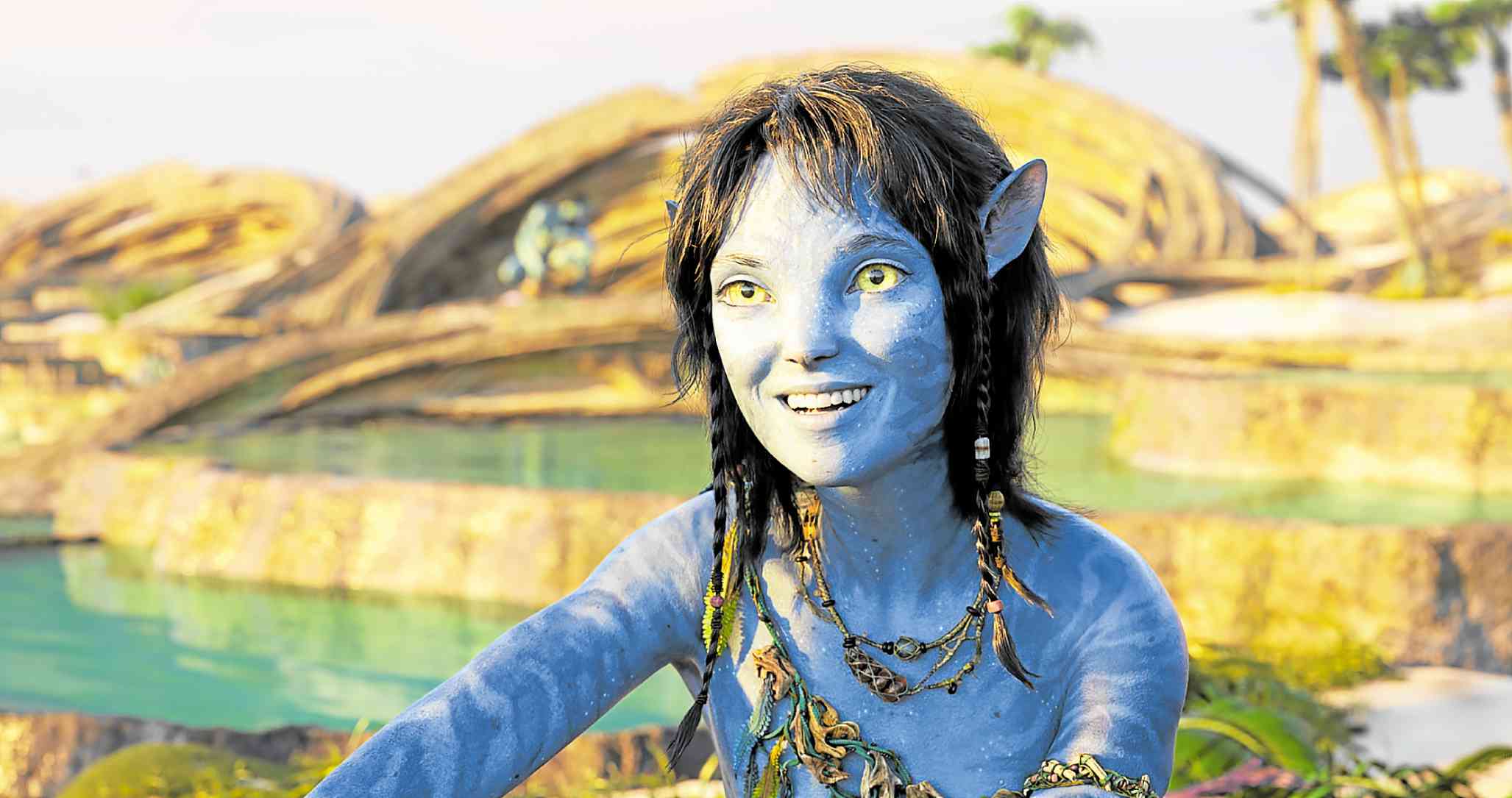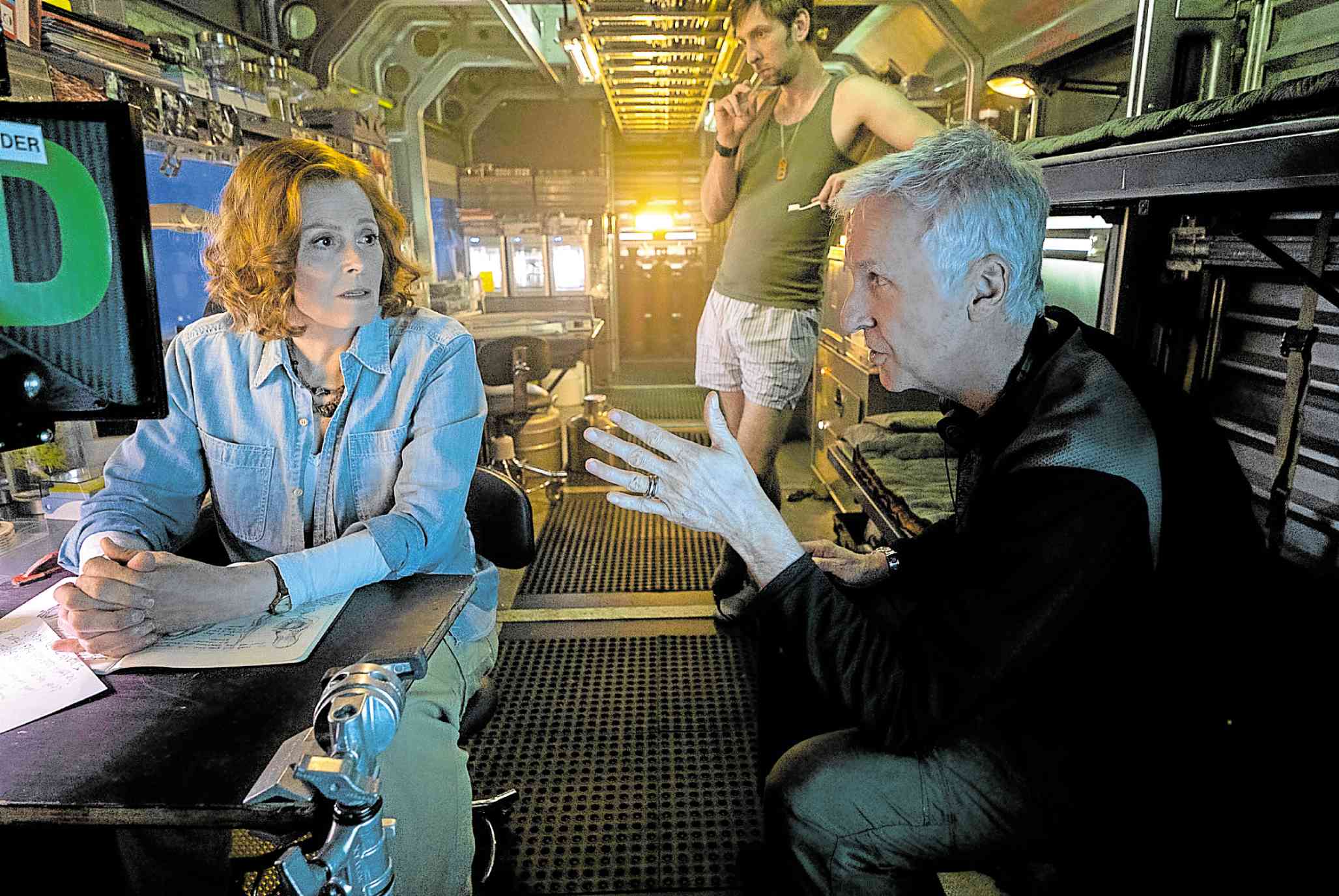
Kiri (Weaver)
It should be forgivable for any film buff to describe interviewing Sigourney Weaver almost like an out-of-body experience. But we kid you not, dear readers, that was how we felt when we spoke to Sigourney last Monday.
It was just hard to contain our excitement when we finally faced the 73-year-old actress behind such iconic screen roles as Ellen Ripley (Ridley Scott’s “Alien,” James Cameron’s “Aliens”), Dian Fossey (Michael Apted’s “Gorillas in the Mist”), Katharine Parker (Mike Nichols’ “Working Girl”) and Janey Carver (Ang Lee’s “The Ice Storm”) to discuss her participation in James Cameron’s eagerly awaited “Avatar” sequel, “The Way of Water.”
The long-anticipated followup begins its theatrical run in the Philippines on Wednesday. It is the first of the four sequels for the highest-grossing film of all time, 2009’s “Avatar,” which has earned about $2.9 billion at the box office so far.
In the 2009 original, members of the indigenous Na’vi tribe on the moon Pandora had to go mano-a-mano against the human colonizers who wanted to drive them away from their ancestral lands. The area is known for its rich deposits of the mineral “unobtanium,” needed to solve the worsening energy crisis on Earth.
But mining unobtanium is no longer the only thing that’s at stake in the highly charged sequel—described by Variety in an early review as a “mind-blowing visual masterpiece”—set about a decade after the events in “Avatar.”

Weaver (left) with Joel David Moore and director James Cameron on the set of “Avatar: The Way of Water” —PHOTOS COURTESY OF 20TH CENTURY STUDIOS
New leader
Jake Sully (Sam Worthington) is now the leader of the Omatikaya clan. But he and his wife Neytiri (Zoe Saldaña), along with their five children—among them adopted teenage daughter Kiri (Sigourney Weaver)—are forced to flee to a far-flung territory to protect their tribe from the oppressive forces of recombinant Col. Miles Quaritch (Stephen Lang) and the RDA (Resources Development Administration).
With the “Sky People” (the earthlings) hot on their heels, the Sullys must embark on a long journey across the vast oceans of Pandora. They soon arrive at the home of the Metkayina water clan, headed by Ronal (Kate Winslet) and Tonowari (Cliff Curtis), who reluctantly welcome their guests.
Unknown to them, however, Quaritch is also tasked with the mission to colonize the entire moon and turn it into the new home for humanity, because Earth is increasingly becoming uninhabitable!
James wanted to have the screenplays for all four followups completed before moving on to production. “We had to write four movies before I could start on the first sequel,” James disclosed. “I wanted to map out all the stories, then get the economy of scale of capturing the actors across multiple movies, then filming the live action. The thinking was, we could consolidate the different stages of production together—performance-capture, live action and then postproduction.”
Beyond the scale and spectacle, however, there was one crucial element that held the whole franchise together, executive producer Jon Landau told Inquirer Entertainment in a separate one-on-one interview.
Jon stated, “I tell people that Jim writes movies with themes that are bigger than their genre, and that’s why his movies resonate with people—and there’s no greater theme, universally, than family.”
Sigourney Weaver —REUTERS
Interconnected saga
He also explained that each “Avatar” sequel’s story comes to its own conclusion and emotional resolution, but when looked at as a whole, all four sequels will create an even larger but interconnected saga.
The sequel did present a new challenge for Sigourney. “In my case, I was playing a new character, Kiri—a delightful and challenging one,” said the Yale and Stanford alumna during our separate roundtable interview with her. “So, I was very wrapped up in that. I had time to do a lot of research, hanging out at kids’ classes, because I play a 14-year-old in it.
“I listened to the pitch of their voices as I unearthed and brought back my 14-year-old self. So, I didn’t really think about the 13 years that passed since Dr. Grace Augustine, my first character, died because Kiri, while related to her, is new.
“By then, we had four scripts that told the story of this family in such an emotional, powerful and joyous way, very much reflecting Jim’s feelings about his own family and the way that kids these days talk to each other, make fun of each other, put each other down, or roll their eyes at each other, but who would also do anything for each other. We had all that going on.”
Jake Sully (Sam Worthington)
Our Q&A with Sigourney:
You’re known for playing such strong, powerful, badass female characters, and your character Kiri certainly falls into that category as well, although perhaps with some slightly softer edges. What for you makes a powerful female character?
Well, the characters I play are women who often have to find their power. They’re not innately powerful, like Ripley [in the “Aliens” films]. Ripley is just a normal ensign who believes that everything will be all right. She plays by the book, and then she transforms into someone who’s a survivor. On the other hand, Kiri is in fact not a fighter. She does other things. She is probably the absolute opposite of most roles I’ve played. She’s a very gentle creature who feels more at home with the forest … with the animals, the plants and the trees. It’s the same thing underwater. She’s gentle, unless she’s stirred up.
There’s a cultural weight associated with “Avatar” and everything that it has achieved. In interviews, James has spoken about the pressure for this movie to perform well. Does that pressure play on your mind as well?
I imagine this is true of all of us. We’re very committed to what “Avatar” is doing and saying, and we’re very proud to be associated with it, given that it’s so immersive and seamless, especially this time out.
But I certainly didn’t feel the same kind of stress. I wasn’t thinking about how much money it’s costing me or how much it’s going to make at the box office. I was just thinking about what I had to do, and about supporting the story of this family working together—those were the very immediate tasks for me.
You’ve essayed iconic roles and have been directed by legendary filmmakers, among them James Cameron, Ang Lee, Ridley Scott and Mike Nichols. What do you think sets James apart from his similarly gifted peers?
James is such an amazing writer. He loves women. Somehow, he can write these very personal and emotional stories delivered by way of memorable lines and great characters. For instance, I love the way he’s turned Quaritch (Stephen Lang) into this sort of amazing villain.
He just has that special ability as a storyteller, which I think is a huge advantage. And having started with Roger Corman and worked on so many successful films, Jim certainly knows every department and what he needs them to do. He’s a great communicator.
But I’d say that the biggest difference now from working with him, however many years ago that is, is that Jim is already much more playful. So, even when we were doing serious scenes, we were like a family. Jim creates a very rare set.
Since you’re playing a teenager in this sequel, what was it like for you to work—and play along—with the young members of the cast? And how were Sam and Zoe as parents?
Sam and Zoe were great parents (laughs)! I was delighted and relieved that when we started doing preproduction, I was in all the same classes with the kids, so we could develop these sibling relationships. I thought they were really nice.
I would arrive there, and with no special effects, I was clearly looking my age (73 years old) … but they just immediately accepted me! So did my parents (laughs). I think I was able to drop this shell away and come in as Kiri. I worked hard to develop that rapport because I didn’t want them to look at me and see just an old lady, you know? So, I think they really saw Kiri in me.
It was a challenging shoot, though. I’m quite comfortable in the water, but I was being asked to do things I’d never done. But Jim made sure that we had the best teacher. We had about a year of practice to build up our capabilities, so by the time we were shooting all the scenes for three months, we were up to the task. All the kids worked so hard, and I’m honored to be part of their sibling group.
The first “Avatar” film discussed subject matter like nature and the environment, life on another planet and imperialism, to name a few. What are some themes that are highlighted in the sequel, and which of them speaks to you as an individual?
The message about imperialism is really, really powerful. You see the Sky People coming back to Pandora, and the first thing they do is land their rocket ships—and they just scorch the entire forest! And you see all these different species running around in a frenzy and going up in flames right in front of you.
So, the message about humans being insensitive to indigenous people and to other species [is very potent]. But these planets are not to be taken over and made over for man—and that’s an even stronger theme than it ever was! That’s mainly my takeaway for the film.

